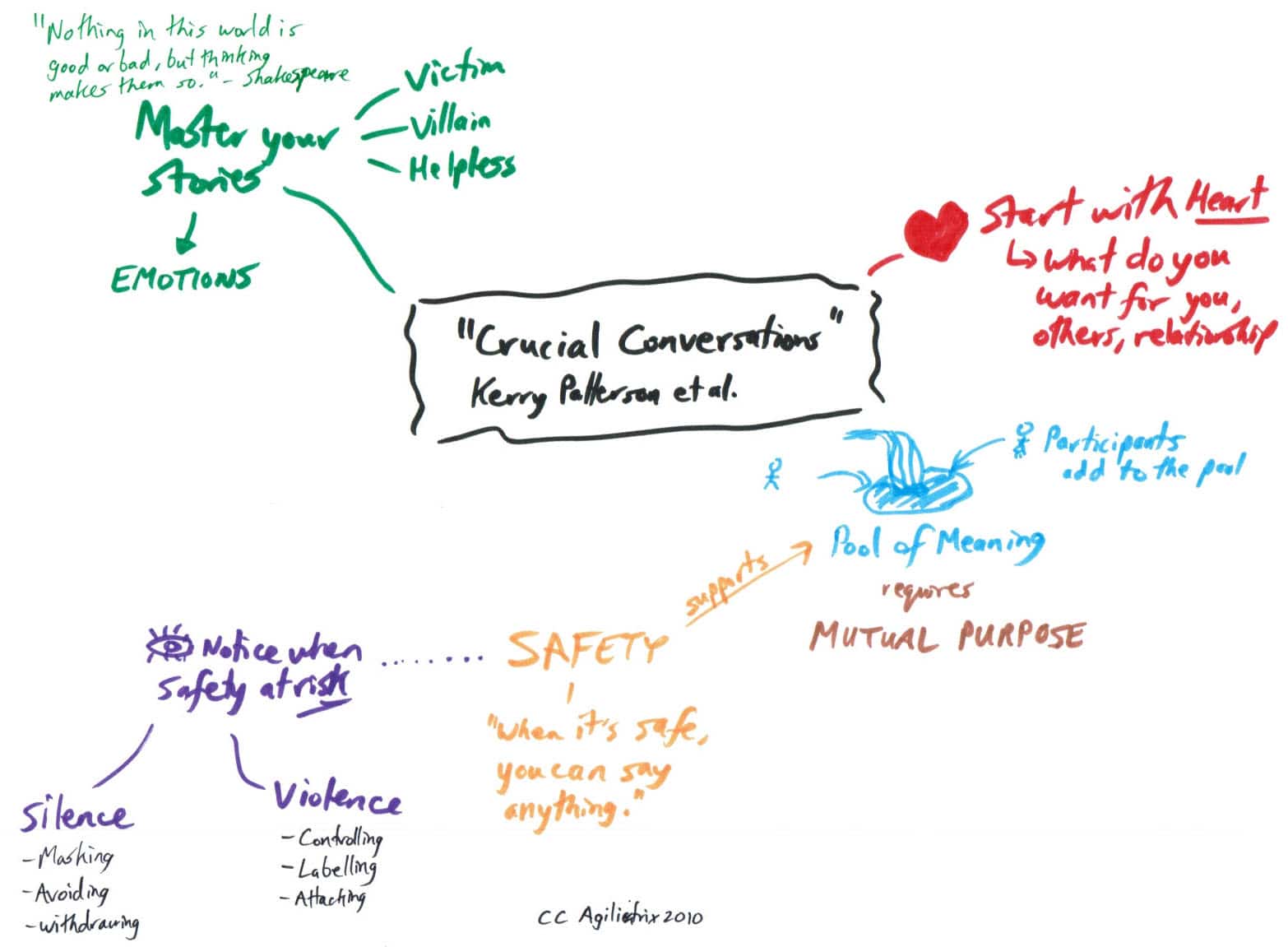One important book that has been in my communication toolkit for years is Crucial Conversations: Tools for Talking When Stakes Are High by Kerry Patterson, Joseph Grenny, Ron McMillan, and Al Switzler. I am mentioning it now since I shared some of these elements in my Scrum Gathering workshop Improve your communication through non-verbal rapport. I’ll blog on this shortly; back to the book.
The book offers several valuable models for communicating effectively when the going gets tough.

The most important concept is that of safety: “when it’s safe you can say anything”. When we feel safe in our environment or with others, then open communication is possible and we collectively add to a shared pool of meaning. When we add to the pool we begin to understand one another and can produce shared insights. Mutual purpose – agreeing about the purpose of a conversation – is another requirement for effectively adding to the pool.
There are two common patterns people fall into that put safety at risk. With silence, people may be withdraw from conversation, avoid topics or respond in ways that obscure meaning. With violence, people may resort to verbal abuse, labeling, and manipulating the situation. Understanding these patterns has allowed me to diagnose situations and be more effective. Also, there is a test that lets you identify your preferred pattern when in conflict so you can debug your own behaviour.
Start with heart is about looking at the conversation with a wider lens – What’s important for you? What’s important for others? What kind of a relationship do you want? This is related to Stephen Covey’s habits of win/win and empathetic listening.
Finally, to be successful, we need to master our stories. One challenge with the way our brain’s work is that we feel emotions and then create stories to justify our emotions. There are many types of unproductive stories that we tell ourselves, the most common and crippling ones are:
- Victim – “How could this have happened to me? What have I done wrong?”
- Villain – “That other person is to blame.”
- Helpless – “I am powerless; there is nothing I can do”
See related topic – Cristopher Avery’s personal responsibility model.


